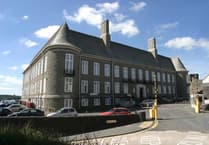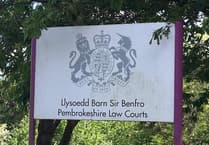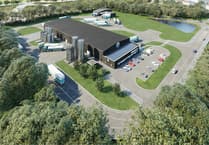One in 20 people in Pembrokeshire aged under 35 years old identify with an LGB+ sexual orientation, new census figures show.
Stonewall said the latest census breakdown shows that with each passing generation, more people feel safer to come out as LGBT+ and live as their true selves.
The census data shows 605 people aged between 16 and 24 years old in Pembrokeshire said they identified with a sexuality other than heterosexual when the census took place in March 2021, alongside 625 aged 25 to 34.
It means about 5.3% of those aged under 35 in Pembrokeshire said they identified with an LGB+ sexuality.
Across England and Wales, the majority of LGB+ people were aged between 16 and 34 years (57.9%), with about 6.2% percent of the age group identifying with a minority sexuality.
The category LGB+ covers people identifying as lesbian, gay or bisexual, as well as pansexual, asexual, queer or any other sexual orientation apart from heterosexual.
The proportion of LGB+ young people varied across the nation with Brighton and Hove at the top of the list (14.8% of under-35s) and Slough at the bottom (2.8%).
Additionally, the data shows females in Pembrokeshire were more likely to identify with a minority sexuality – with 1,430 saying they were not straight compared to 925 males.
Nationally, 830,000 females (3.3%) identified with an LGB+ sexual orientation compared to 706,000 males (3%).
The census also asked people, for the first time, about their gender identity. In Pembrokeshire, 320 (0.3%) people said they did not identify with the gender assigned to them at birth.
The figures show 85 people aged 16 to 24 years said they were transgender – accounting for 26.6% of the trans community in the area.
In England and Wales, people aged 16 to 24 years old were the most likely age group to have said their gender identity was different from their sex registered at birth.
About 1% of the younger age cohort said they were trans, followed by 0.8% of people aged between 24 and 34 and 0.6% of people aged 35 to 44 years old.
Stonewall said: "Following the initial data showing over 1.5 million lesbian, gay and bi people living in England and Wales, we now see that younger generations feel safer to be themselves.
Each generation reports more lesbian, gay and bi people than the last – but that doesn’t necessarily mean there are now simply more of us. It suggests that older generations were not always safe or free to speak about their experiences, or lacked the language to describe them."
The charity added the data is a reminder to leaders, institutions and governments to champion the LGBT+ community.




